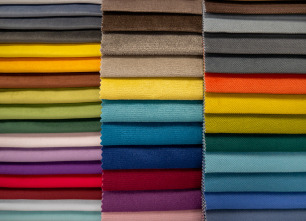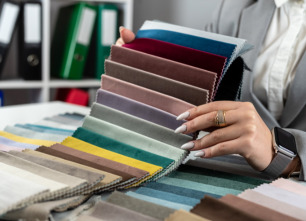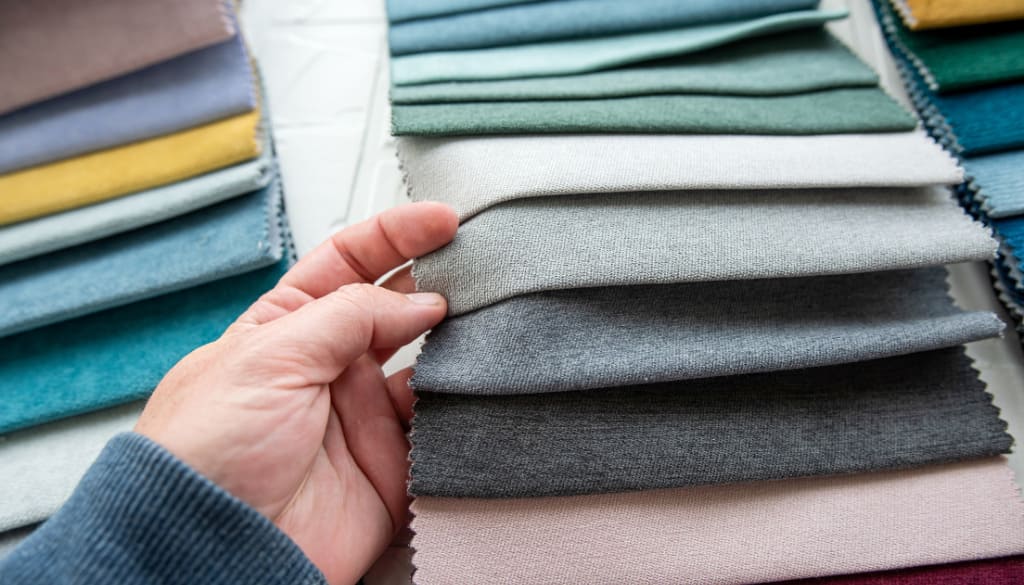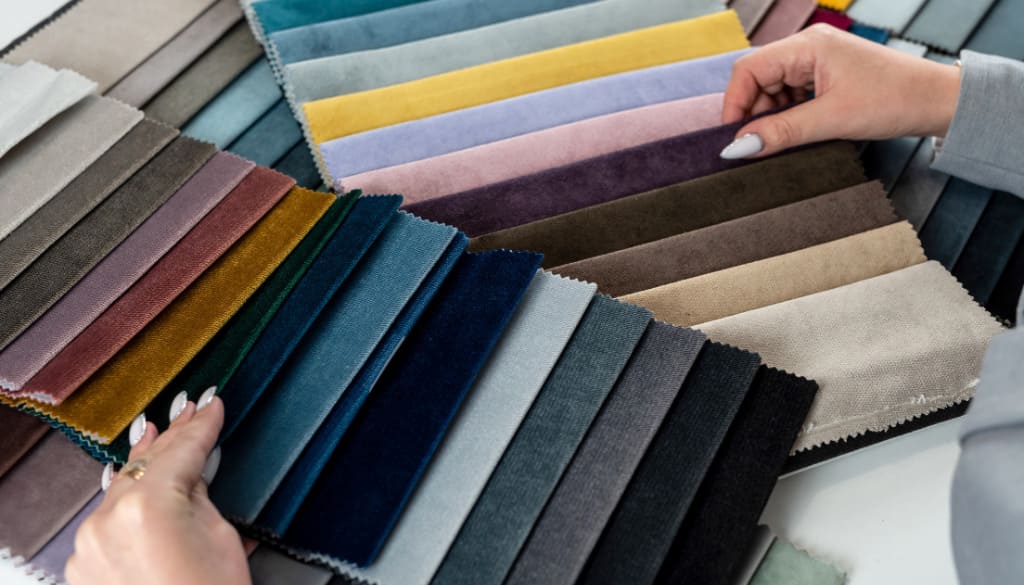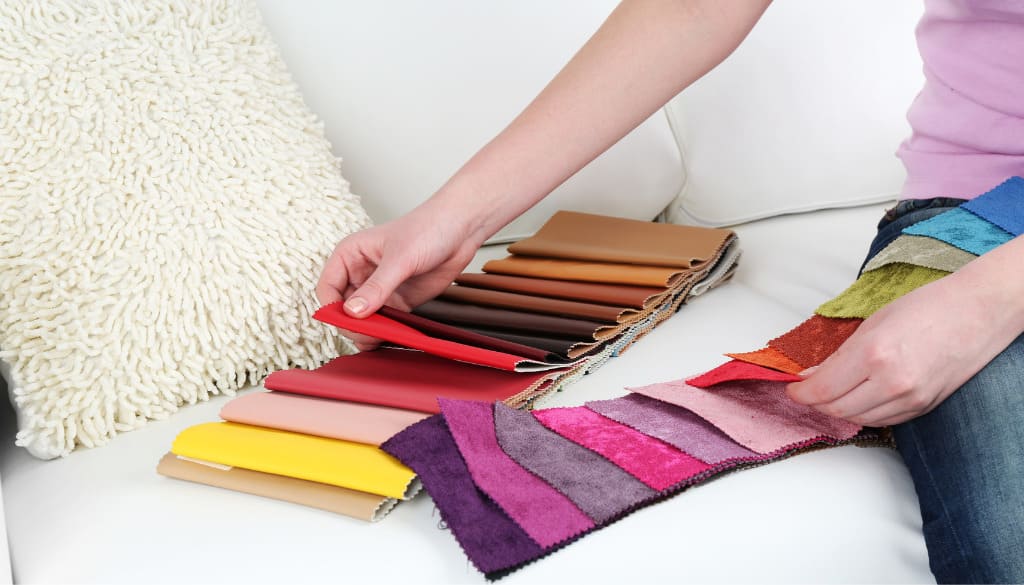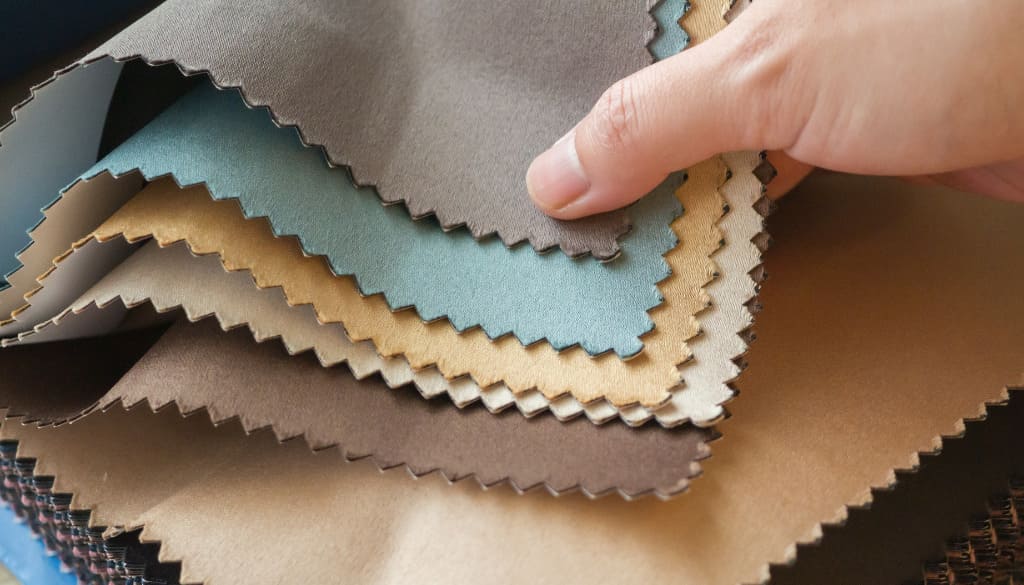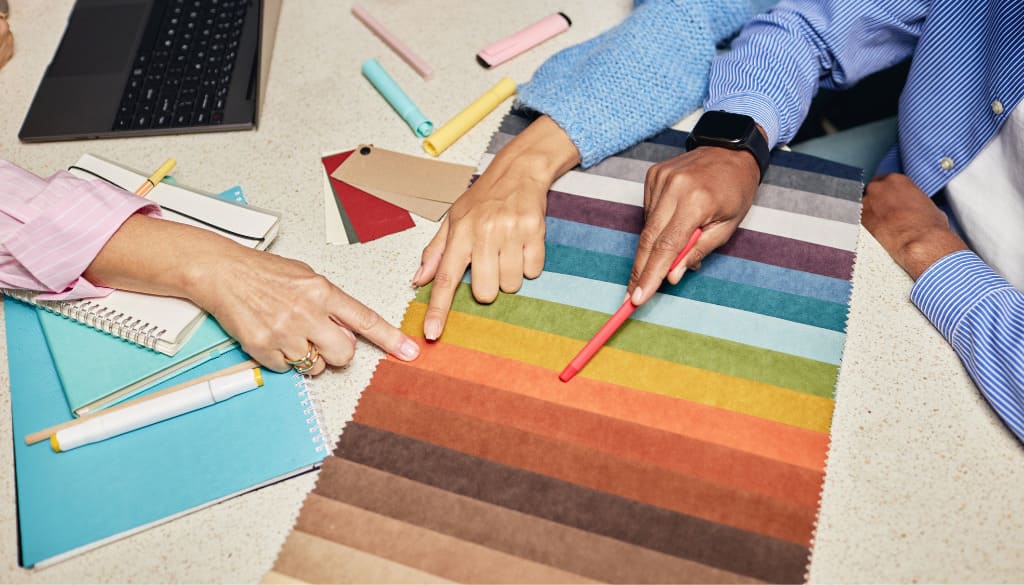In Print on Demand (POD) business, fabric is a core factor that determines the product’s quality, print outcome, and customer experience. A beautiful design can only truly succeed when printed on the right fabric, ensuring accurate colors, sharp print details, and a comfortable wearing experience. Choosing the right fabric not only helps sellers optimize production costs and reduce return rates but also enhances brand value and drives revenue growth. This article will help you understand the most common fabric types used in POD, their characteristics, and how to select the right material for each product line.
Classifying Fabrics by Common Materials in POD
In POD, fabrics are typically classified based on their fiber composition. Below are the most common fabric groups that every seller should understand.
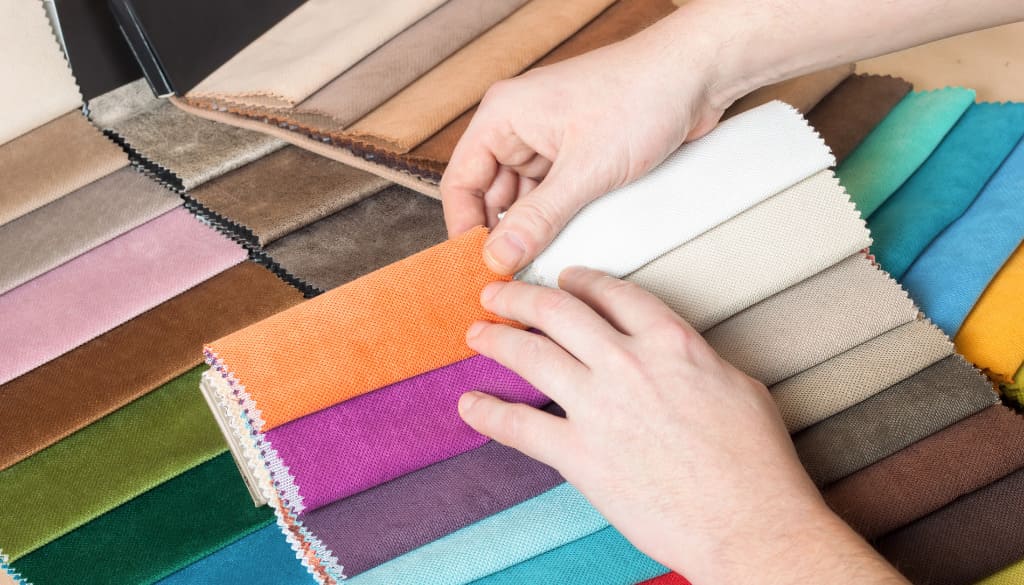
1. Cotton – The Most Popular Natural Material
Cotton is the most widely used natural fiber and dominates the POD T-shirt market. Its softness, breathability, and superior moisture absorption make it an ideal choice for everyday fashion products.
- 100% Cotton: This is the gold standard for Direct to Garment (DTG) printing. Water-based DTG ink penetrates deeply and bonds tightly with natural cotton fibers, resulting in highly detailed prints with vibrant colors and a soft, smooth feel — without adding bulkiness.
- Organic Cotton: Grown without pesticides or harmful chemicals, organic cotton is the top choice for brands targeting health- and eco-conscious customers. Although it comes with a higher cost, it provides a strong branding advantage by aligning with sustainability values.
Key Terms to Know:
- Ring-spun Cotton: Cotton fibers are continuously twisted and thinned, creating longer, stronger strands. Fabrics made from ring-spun cotton are softer, smoother, and more durable than regular cotton.
- Combed Cotton: A premium version of ring-spun cotton in which short fibers and impurities are completely removed before spinning. The result is an exceptionally soft, smooth fabric with no loose fibers, ideal for high-quality apparel.
2. Polyester – High Durability, Ideal for Sublimation Printing
Polyester is a synthetic fiber derived from petroleum, well-known for its exceptional durability, wrinkle resistance, shrink resistance, and quick-drying properties. It is a dominant material in the sportswear industry and other products that require high colorfastness.
- 100% Polyester: This fabric is the perfect surface for sublimation printing. Under high heat, sublimation ink transitions from a solid to a gas and bonds permanently with polyester molecules. This technique creates vibrant, full-coverage (all-over-print) designs that never fade, crack, or peel, and the print becomes completely undetectable to the touch.
- Characteristics: Polyester fabric typically has a slightly shiny appearance and is less breathable than cotton, often feeling “hotter” when worn in humid weather conditions.
3. Blended Fabric – A Balanced Combination of Cotton and Polyester
Blended fabrics combine cotton and polyester to leverage the strengths of both fibers. This is a highly versatile and popular choice, offering a balance between comfort and performance.
Common Ratios:
- 50/50 (50% Cotton / 50% Polyester): A classic blend that provides the softness of cotton and the durability and wrinkle resistance of polyester. 50/50 fabric shrinks less than 100% cotton and maintains its shape better after multiple washes.
- CVC (Chief Value Cotton – 60% Cotton / 40% Polyester): With a higher cotton content, CVC fabric retains a soft, breathable feel while being more durable and less prone to wrinkling than pure cotton.
- Heather Fabric: This term refers to fabrics with a “salt and pepper” or mixed-color effect, created by weaving fibers of different colors together. Most heather fabrics are cotton/polyester blends.
4. Tri-Blend – Premium Fabric for Fashion Apparel
Tri-blend fabrics are made from a combination of three fibers: Cotton, Polyester, and Rayon. Rayon is a semi-synthetic fiber derived from wood cellulose, known for its incredible softness, smooth texture, and excellent drape.
- Typical Composition: 50% Polyester, 25% Cotton, 25% Rayon.
- Characteristics: Tri-blend fabric delivers an ultra-soft, lightweight, and stretchy feel, with a slightly heathered appearance that gives it a distinctive vintage style. It’s a premium choice for fashion-forward T-shirt lines.
5. Organic Cotton – The Sustainable Trend
Organic cotton is produced from cotton grown without harmful chemicals or pesticides, making it safe and environmentally friendly. It’s the ideal material for brands committed to green and sustainable fashion.
Trend: Organic cotton is increasingly popular in markets like the U.S. and Europe, where consumers are willing to pay a premium for sustainable fashion products.
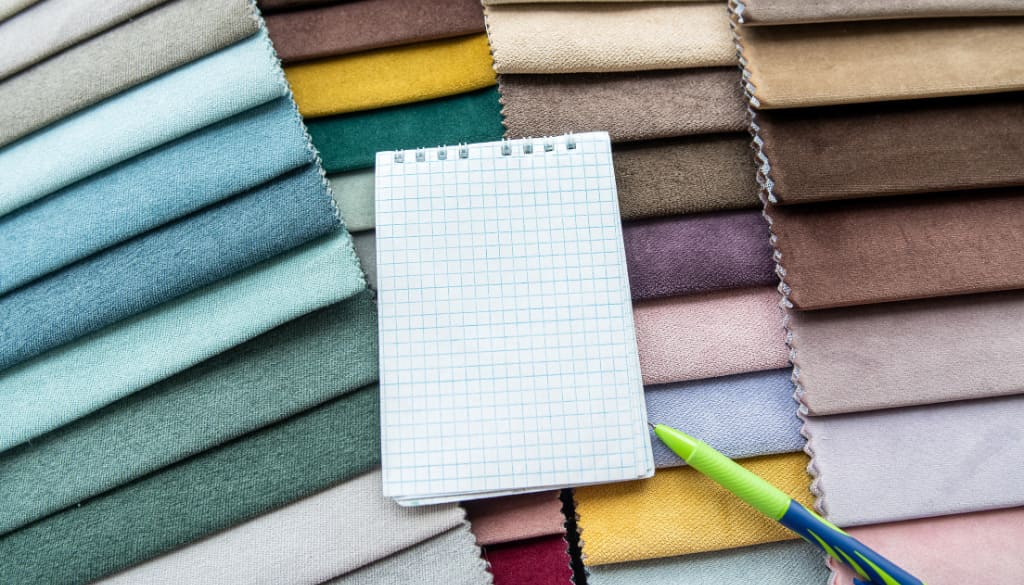
Characteristics and Impact of Each Fabric Type on Print Quality
Understanding the relationship between fabric material and printing technology is crucial. It determines whether the print will be sharp, vibrant, durable, and provide a great customer experience.
|
Fabric Type |
Compatible Printing Technology |
Print Color Quality |
Print Durability |
Main Applications |
|
100% Cotton |
DTG, DTF, Screen Printing |
Accurate, sharp |
Good |
T-shirts, hoodies, sweatshirts |
|
Polyester |
Sublimation |
Vibrant, lively |
Very high |
Sportswear, blankets, pillows, tote bags |
|
DTG, DTF |
Stable, colorfast |
High |
Hoodies, sweatshirts, budget-friendly T-shirts |
|
|
Tri-Blend |
DTG, DTF |
Light colors, slightly vintage |
Medium – High |
Fashion apparel, premium niche products |
|
Organic Cotton |
DTG, Screen Printing |
Sharp, accurate colors |
Excellent |
Eco-friendly products |
Applications of Fabric Types in POD Products
In the Print on Demand (POD) business, each product type has its own requirements when it comes to fabric selection. Choosing the right fabric not only impacts print quality and product durability but also affects production costs, pricing, and customer satisfaction.
POD sellers must understand the characteristics of each fabric type to ensure their products meet customer expectations while staying competitive in the market. Below is a detailed analysis of how different fabrics are applied to the most common POD product lines today.
1. T-Shirts
T-shirts are the core product for most POD sellers, often accounting for a large portion of their revenue. They require flexibility in fabric choice to cater to various customer segments and different marketplaces.
100% Cotton:
- Ideal for designs that require sharp, high-quality prints with accurate colors and excellent durability.
- Preferred on marketplaces like Amazon, Etsy, TikTok Shop, and Walmart, where customers value comfort and product quality.
- Perfect for basic styles, mid-range, and premium T-shirt lines.
50/50 Blend (Cotton + Polyester):
- Balances cost and quality, helping sellers lower their base cost while maintaining comfort.
- Prints are long-lasting and resistant to wrinkles or shrinkage after washing.
- Suitable for competitive pricing campaigns, especially on TikTok Shop or Walmart.
Tri-Blend (Cotton + Polyester + Rayon):
- Best for premium fashion lines or niche markets.
- Offers an ultra-soft, breathable, and luxurious feel with a premium style.
- Produces slightly faded, vintage-style prints that stand out as unique and fashionable.
Recommended Products:
- Gildan 5000: Affordable, standard cotton T-shirt ideal for high-volume sales.
- Bella + Canvas 3001: Premium cotton T-shirt with a smooth, high-end fabric feel.
- Comfort Colors 1717: Features a unique vintage style with signature pigment dyeing.
Pro Tips: For T-shirts, sellers should offer a variety of fabric options to serve different customer segments, from budget-friendly to premium. This approach helps maximize revenue potential while minimizing risks when expanding into new markets.
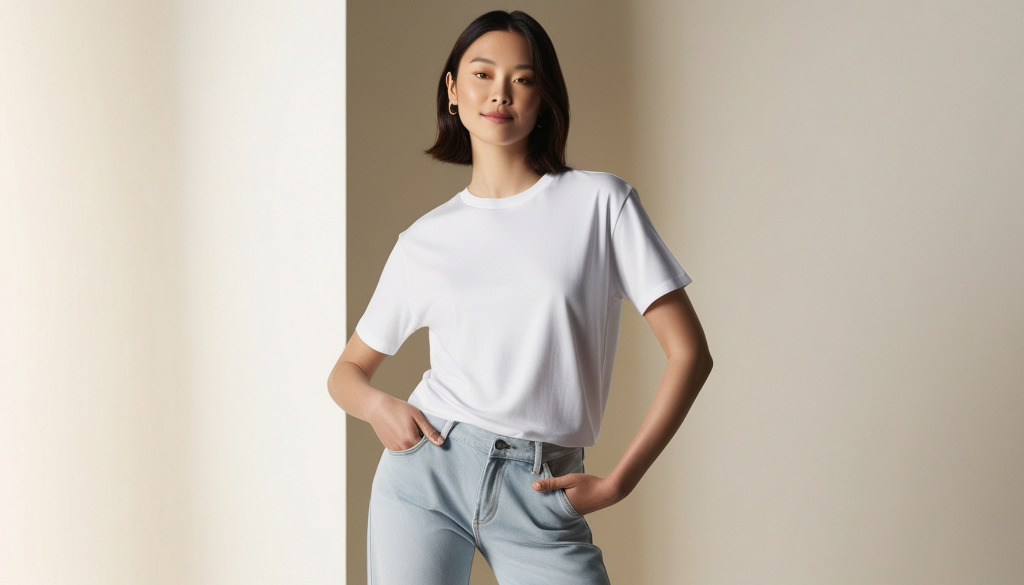
2. Hoodies and Sweatshirts
Hoodies and sweatshirts are popular products during the colder seasons. They have higher order values compared to T-shirts and offer sellers better profit margins. Fabric choice plays a crucial role, impacting warmth, durability, and print quality.
Cotton + Polyester (Blended Fabric):
- The most common choice, offering a balance between softness and durability.
- Resistant to wrinkles and shrinkage after washing, while maintaining clear, long-lasting prints.
- Ideal for mass-market customers and marketplaces where competitive pricing is essential.
100% Cotton:
- A more premium option that provides superior comfort and excellent heat retention.
- Commonly used for high-end products or niche premium markets.
Recommended Products:
- Gildan 18500: The most popular POD hoodie with affordable pricing and consistent quality.
- Comfort Colors 1566: Premium hoodie with unique pigment-dyed vintage styling.
Pro Tip: Use blended fabric for standard, mass-market hoodies and 100% cotton for premium product lines to offer a wide range of options for different customer needs.
3. Tote Bags
Tote bags (canvas bags) are a popular POD product, easy to sell, and perfect as gifts or complementary items in an online store. The fabric choice affects durability, weight, and print quality.
Cotton Canvas:
- Strong and durable, eco-friendly, and aligned with sustainable fashion trends.
- Provides sharp, clear prints with a surface well-suited for custom designs.
- Attracts environmentally conscious customers who value sustainability.
Polyester:
- More affordable, ideal for large-scale production.
- Works perfectly with sublimation printing, delivering vibrant, colorfast results.
Recommendation: Choose cotton canvas for fashion-forward products and polyester for competitive pricing campaigns or bulk giveaways.
4. Sportswear
Sportswear requires fabrics that are stretchy, breathable, and colorfast to withstand frequent movement and washing.
100% Polyester:
- The go-to choice for sublimation printing, ensuring sharp, flawless prints that never crack or peel.
- Excellent moisture-wicking properties, keeping wearers dry during intense activities.
Stretch and Flexibility:
- Essential for comfort and freedom of movement, especially in fitted, performance-oriented apparel.
Common Applications:
- Jerseys, gym wear, running shirts, and team sports uniforms.
5. Other Products
In addition to T-shirts, hoodies, and tote bags, other POD products also require the right fabric selection to ensure vibrant prints and long-lasting durability.
Blankets and Pillows:
- Polyester is the top choice due to its excellent color retention, producing vivid prints that don’t crack or peel.
- The soft fabric surface provides a comfortable and pleasant user experience.
Small Accessories (Hats, Scarves, Pillow Covers, Laptop Sleeves):
- Can be made with cotton or blended fabrics, depending on the specific needs and printing technology used.
- Choosing the right fabric helps optimize production costs while maintaining quality and durability.
Choosing the Right Fabric for POD Products
Selecting the right fabric is a crucial business strategy in the POD industry. This decision directly impacts product quality, pricing, profit margins, and customer satisfaction. The fabric selection process should be based on four key factors: target customers, sales platform, printing technology, and production costs.
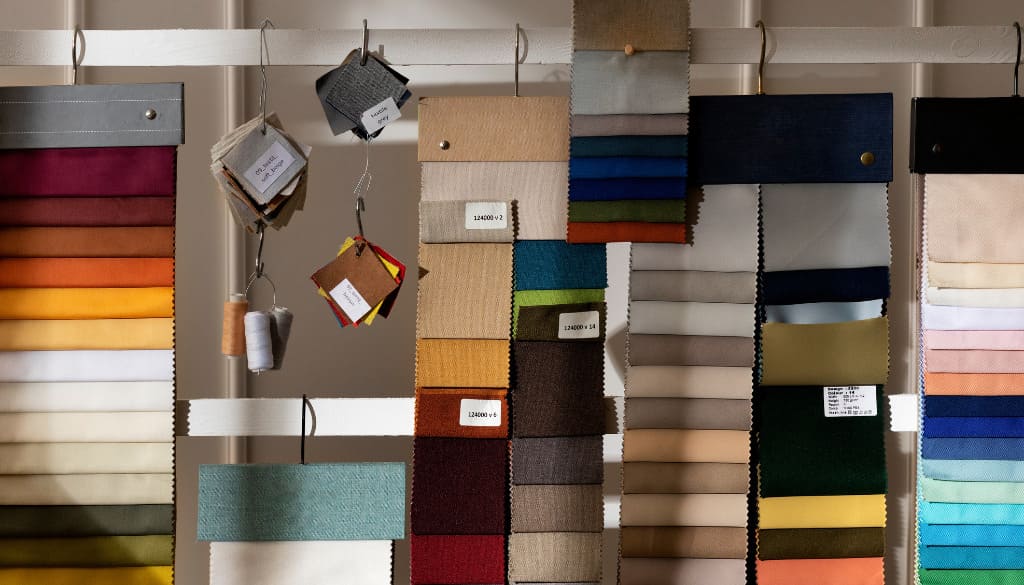
1. Based on Target Customers
Each customer group has different needs and expectations, so sellers must clearly segment their audience to choose the most suitable fabric.
General Customers:
- Prioritize 100% cotton or blended fabrics (cotton + polyester).
- Focus on balancing quality and affordability, making products accessible and easier to sell in high volumes.
- Ideal for basic products like T-shirts, hoodies, and tote bags.
Premium Customers:
- Choose Tri-Blend or Organic Cotton to enhance user experience and elevate brand positioning.
- These materials deliver a premium feel and cater to demands for sustainable and luxury fashion.
Pro Tip: Sellers should diversify their product catalog with both standard and premium lines to serve a wide range of customer segments.
2. Based on Sales Platforms
Different e-commerce platforms have their own characteristics, requiring flexible fabric choices.
- Amazon & Etsy:
- Product quality and customer reviews are critical.
- Prioritize 100% cotton or Tri-Blend to deliver excellent user experience and minimize return rates.
- TikTok Shop:
- Highly price-competitive environment where base cost optimization is essential.
- Use blended fabrics or standard cotton to maintain profitability while ensuring consistent quality.
- Walmart:
- Requires products to meet strict quality standards and compliance regulations.
- Choose premium cotton or high-quality blends.
3. Based on Printing Technology
Fabric type and printing technology are closely linked. Choosing the wrong fabric can result in blurry, cracked, or faded prints.
- DTG / DTF:
- Best suited for 100% cotton or blended fabrics.
- Produces sharp, accurate, and long-lasting prints.
- Sublimation:
- 100% polyester is mandatory for vibrant prints that bond firmly to the fabric fibers.
- Screen Printing:
- Highly versatile and works on a wide range of materials, including cotton, polyester, and blends.
4. Considering Production Costs
Sellers must compare base cost to retail price to ensure profitability. Below are approximate cost ranges:
|
Fabric Type |
Base Cost (Reference) |
Best For |
|
100% Cotton |
$5.50 – $7.00 |
Amazon, Etsy, Shopify |
|
Cotton + Polyester |
$4.90 – $6.50 |
TikTok Shop, Walmart |
|
Polyester |
$4.50 – $6.00 |
Sportswear, promotional gifts |
|
Tri-Blend |
$8.00 – $12.00 |
Premium lines, niche products |
In the Print on Demand (POD) business, selecting the right fabric not only affects product quality but also plays a decisive role in customer experience and your profit margin. If your goal is to optimize production costs and easily run high-volume sales campaigns on platforms like Amazon, Walmart, or TikTok Shop, standard fabrics such as 100% cotton or blended fabrics are the most practical choices. On the other hand, if you aim to build a premium brand targeting customers who value soft textures, modern fits, and sustainability, consider Tri-Blend or organic cotton to elevate the value of your products.
For personalized advice on fabric selection, suitable products, and effective POD sales strategies, contact FlashShip at (+84) 943 024 337 or visit seller.FlashShip.net for prompt and dedicated support.
Read more articles:
